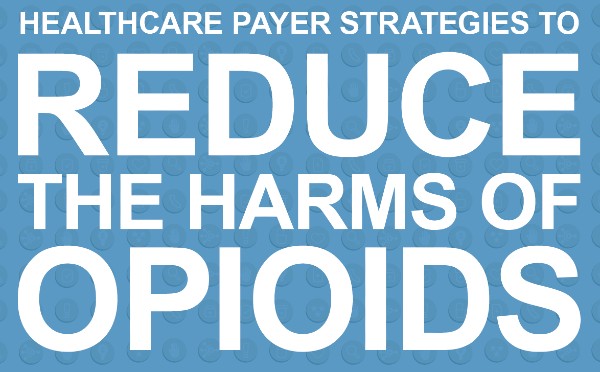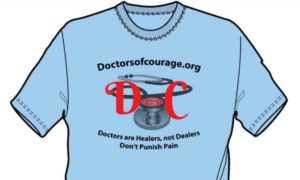This segment and segment 4 will discuss the priority actions identified on the White Paper for the three approaches being used to target doctors and chronic pain patients.
HFPP RECOMMENDED PRIORITY ACTIONS FOR APPROACH 1
Which include:
- Train providers on the CDC Guideline for Prescribing Opioids for Chronic Pain.
- Promote access to and usage of MAT (Medication-Assisted Treatment such as buprenorphine).
- Promote the availability of naloxone.
Provider Education and Communication
The recommendations in the White Paper for provider education and communication and continued medical education (CME), are good. One method they considered promising was education outreach visits which are modeled after pharmaceutical sales strategies. Outreach visits are in-person meetings with providers to educate them on new guidelines, clinical practices, or approaches to care. Rather than rely on pharmaceutical companies, this would be a good way for doctors to learn new treatments.
However, it doesn’t appear that this part of the White Paper is being addressed at all. If any doctors out there have had outreach visits by insurance companies (chronic pain patients check with your doctors to see if this has happened), please let me know which insurance companies is carrying this recommendation out. My guess is none. This would add extra cost, and, IMO, the purpose of this white paper is to make money off attacking doctors, not spending it educating them.
Promotion of Medication-Assisted Treatment (MAT) and Promotion of Naloxone
Some good strategies suggested in this action:
- Offering non-opioid pain management alternatives that are evidence-based.
- Supporting behavioral health and care management.
- Supporting coverage of chiropractic and acupuncture care for the treatment of chronic pain.
But in the end, the actually helpful strategies suggested of non-opioid alternative treatments were not listed, but only Provider education, MAT, and Naloxone for Approach 1. Obviously what this organization is really interested in is what saves them money, not what is in the patient’s best interest.
In my opinion, the main purpose of the HFPP as an organization, and their White Paper is shown in Approach 2 and 3: Using data from physician claims to target physicians to charge in federal court so that the HFPP partners make money.
HFPP APPROACH 2: IDENTIFY AND MITIGATE POTENTIALLY FRAUDULENT, ABUSIVE, OR WASTEFUL ACTIVITIES RELATED TO OPIOIDS
HFPP PRIORITY ACTIONS FOR APPROACH 2
Use data to identify fraudulent, wasteful, or abusive practices associated with opioids in order to target corrective actions. This includes coordinating and cooperating with law enforcement and other relevant governmental or regulatory bodies to these issues.
Strategies for Approach 2
DATA INFORMATICS AND INFORMATION SHARING
Insurance companies have several systems to monitor for fraud, waste, and abuse. These data systems include, but are not limited to:
- Authorization systems that either pre-authorize a treatment regimen or interact with a point of sales system in a pharmacy.
- Claims processing systems that analyze submitted claims for policy, regulation, payer-defined edits and reviews.
- Data warehouses that allow for advanced data analytics monitoring such as in their Special Investigation Units (SIUs), to search for fraud, waste, and abuse.
Information system analytics can be used to identify fraud, waste, and abuse related to opioids through various mechanisms:
- Identify the characteristics and patterns of providers that are prescribing opioids inappropriately or with criminal intent.
- Models or algorithms can be developed to deny payment for prescriptions that do not conform to general prescribing practices, are contraindicated when prescribed with other medications (e.g., benzodiazepines), or that place a patient at risk for developing or continuing problems with OUD.
- Target patient education efforts regarding the dangers of opioid analgesics, alternatives to opioids for pain management, and the availability and coverage of effective treatment for OUD.
BOTTOM LINE: INVASION OF PATIENT PRIVACY
Insurance’s ability to target doctors increases through the collaborative interchange of claims and other payer data; particularly, personally identifiable information.
HFPP partners are making investments to improve the capabilities of their individual systems to target physicians prescribing opioids. One of the purposes of the HFPP is to allow for the combination of payer data in a way that allows cross-payer analysis that would not otherwise be possible. The HFPP has access to resources that enable partners to share data on a regular basis, including personally identifiable information, empowering them to monitor and evaluate provider and patient activities across payment organization boundaries. The HFPP, through a non-medical data analytics company, consolidates and standardizes claims from individual partners’ warehouses or claims systems to run cross-payer analytics on shared data and provide information.
PRESCRIPTION DRUG MONITORING PROGRAM INFORMATION
HFPP partners have expressed a desire to access PDMP data to supplement information currently contained in their own data warehouses. The PDMP data would also be an additional source for identifying high prescribers and high users.
CONCLUSIONS TO BE DRAWN
HFPP is going after doctors using federal assistance in the court system and federal agencies. They are taking personal patient information and sending it to a non-medical data analysis company where this information is put through multiple data analytics, much of which has not been validated as being reliable, but gives the insurance companies lists of doctors that they can then target for criminal charges in order to recoup the claims these doctors have made.
Linda Cheek is a teacher and disenfranchised medical doctor, turned activist, author, and speaker. A victim of prosecutorial misconduct and outright law-breaking of the government agencies DEA, DHHS, and DOJ, she hopes to be a part of exonerating all doctors illegally attacked through the Controlled Substance Act. She holds the key to success, as she can offset the government propaganda that drugs cause addiction with the truth: The REAL Cause of Drug Abuse.
Get a free gift to learn how the government is breaking the law to attack your doctor: Click here to get my free gift

